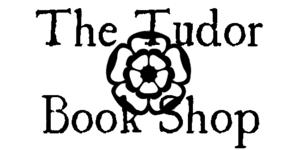
Queen Elizabeth I arrives at her favourite palace.
Wiki Commons
QUEEN ELIZABETH I
COURT LIFE
Court was wherever the Queen happened to be and was made up of all those who surrounded the Queen from servants to the courtiers themselves.
Once a year the Queen would go on a progress to the southern counties, but most of the time she resided in one of her great royal palaces:
Whitehall, Hampton Court, Greenwich, Richmond, St James, Windsor Castle, and towards the end of her reign, Nonsuch. All these palaces were,
in their different ways, magnificent to behold with high fanciful towers and a sea of spiralling chimneys. Whitehall was reputedly the
largest palace in Europe, spanning an incredible 23 acres, and it was in this palace Elizabeth lived more than any other.
Read more about The Queen's Palaces
Over a thousand people generally attended court. Therefore, the larger the palace, the easier it was to accommodate this number of people.
But no matter which palace the Queen stayed in, it was still not possible to house everyone and many courtiers, ambassadors, or other
people who wished to attend court had to lodge nearby. All these palaces were in or near London so finding suitable lodgings was not
difficult. London was one of the biggest cities in Europe, having a population of 200,000 and growing, and offered everything that a
visitor could want from travelling inns to shops to entertainment. However, being lodged at court was an honour and the Spanish Ambassador,
Count de Feria, was not at all pleased that he had to lodge in city dwellings rather than at court as he had done in Mary I's reign.

Elizabethan Maundy
By Levina Teerlinc
The Queen would usually retire to Whitehall for Christmas and then move on to another palace, such as Richmond or Greenwich, before moving
to Windsor for Easter and the Maundy ceremony. In this ceremony, Elizabeth would ceremoniously wash the feet of poor women (the same number
as the Queen's age), sign their feet with a cross, and then kiss them. The women would then be given presents of cloth, shoes, fish, bread,
wine, and purses containing the same number of coins as the Queen's age. St George's Day was also celebrated at Windsor.
It was important that the court moved after a few weeks as the palaces needed to be "aired and sweetened". Sewerage facilities were
primitive so unless the palaces were cleaned after several weeks, it would become an unhygienic and unpleasant place to be. When the court
was not in residence, the Palace would be cared for by a Keeper and resident staff and they were expected to have things ready so that the
Queen and her court could arrive at a moment's notice. Windsor Castle, for example, was the strongest and best placed castle to offer the
best defence should enemy forces invade the country, so it was imperative that the Queen and court could resort there immediately should
an invasion occur.
At her accession, the Queen inherited over sixty royal residences. Some Elizabeth occasionally frequented, but many were dilapidated.
Others fell into ruin over the course of the reign as the cost of maintaining them was enormous. One solution was to bestow these
residences on favoured courtiers. Robert Dudley, in particular, did well in this regard, receiving, amongst others, Kenilworth Castle in
Warwickshire.

Great Hall, Hampton Court Palace
The royal palaces were, in many ways, an architectural embodiment of the monarch. They were therefore not only magnificent in exterior appearance, but had also magnificent interiors. Compared to the conditions of medieval royal castles, the palaces were luxurious. Large elaborately decorated fireplaces provided heat, and walls were covered either partly or totally with decorated oak panelling which was not only visibly impressive but acted as insulation too. Long, high, windows let sunlight seep in and ceilings were intricately decorated with plaster. Paintings and expensive tapestries adorned the walls and plates of silver or gold were displayed to impress visitors.
There were two important halls: The Great Hall and the Presence Chamber. Everyone who lived or worked in the palace had
access to the Great hall,
but only courtiers and important visitors were permitted to enter the Presence Chamber. In this grand hall the Queen would give audience,
socialise and be entertained, although large scale events would be held in the Great Hall. Access to more private parts of the palace depended on status
and personal relations with the Queen. Security was very tight. With so many people daily visiting court there was always the danger that
an assassin could target the Queen. Elizabeth was thus well guarded and access to her privy chambers was strictly controlled by her
Gentleman Ushers. The Queen had two important private rooms, the Privy Chamber and the Bedchamber, although she was rarely, if ever,
alone in either for she was constantly attended by her Ladies in Waiting and grooms of the Privy Chamber. The Queen would also often entertain Ambassadors
in her private apartment.

Queen Elizabeth with Ambassadors (c.1560)
Elizabeth tended to spend most of her day in her private lodgings, but she also had a privy garden and she loved to take brisk walks in the great outdoors, accompanied by her ladies. The palaces also housed a great library and Elizabeth was an avid reader. She was fluent in Latin and Greek and loved to read and translate the works of classical authors and was also very interested in history. Dinner was usually served around noon and courtiers would generally eat together in one of the two halls, although some would have food delivered to them privately in their quarters. Elizabeth tended to take her meals in her Privy Chamber and ate only in the Presence Chamber on special occasions. Not only was she spared public scrutiny, but she could eat her meals without too much ceremony, and get on with the business of the day. Her ladies would bring several plates of food to her Privy chambers, food which had been ceremoniously checked for poison, and after taking what she wanted, the food would be shared amongst her ladies.

Robert Devereux, Earl of Essex
Courtly Tournament (1595)
Supper at Court was served at between five and six in the evening and afterwards entertainment would be provided in the
Presence Chamber, such as a play, a masque, a ball, or a musical concert. Sometimes the Queen would attend or she would stay in her privy
rooms and continue reading and signing state papers. Most of the palaces had a hunting park where the Queen and her courtiers could hunt
deer. This was one of the Queen's favourite pastimes. Bear baits and dog baits were also held at court, together with less violent sports
such as hawking. Tennis was another courtly pastime, as was jousting, and major jousting tournaments were held. This was a dangerous sport
that resulted in the death of Henry II of France, but the danger was part of the thrill and the romance.
There was a lot of ceremony surrounding the Queen. For example, as she moved around the palace, guards would line her route and a fanfare
would announce her arrival. The Queen's head was always theoretically meant to be higher than everyone elses, although in practice this
may have been hard to observe without all the tall men of her court permanently kneeling. No one was supposed to turn their back on the
monarch, which often meant walking backwards if leaving the Queen's presence. All courtiers were also expected to present the Queen with a
New Year's gift, and in return the Queen would present them with a gilt plate to the value of their status. Later, it became customary to
present her with a gift on her birthday and accession day also.

Robert Dudley, Earl of Leicester
Much was expected of a male courtier. He was expected to be graceful and courteous in manner and discourse; well educated in classical
works of literature, history, geography, mathematics, languages; athletic, industrious, generous, and witty. While all the men who
frequented the court were technically a courtier, the role of the traditional courtier was very different to the role of
the councillor or the politician.
The Queen, therefore, expected different things from various men. Of traditional Courtiers like Robert Dudley, she expected a certain
flamboyance of dress and manner. She expected to be courted in the courtly love tradition, in which she was the available, but ultimately
unobtainable, lady they wished to woo. She expected flattery, gifts, expected to be courted by music, by dancing, and by words of love and
devotion. It was all part of the courtly ideal and a perfect solution to the problem of how a man should behave towards a female monarch,
especially a single female monarch. It was in many ways frivolous fun and married men as well as single men played this game with the
Queen. It was not meant to be taken from the courtly to the personal level or to result in an actual relationship or personal romance
with the Queen. Hostile outsiders sometimes misunderstood (or deliberately misrepresented) these innocent flirtations for serious romantic
intentions and this was partly responsible for the idea that Elizabeth was not really the Virgin Queen she claimed to be. Rumours
circulated, especially in Europe, that she was sleeping with Robert Dudley, Christopher Hatton and other courtiers, and Elizabeth is said
to have complained: "I do not know how such a bad opinion has been formed of me. A thousand eyes see all I do."

Sir Francis Walsingham
Of her political advisors, Elizabeth expected a degree of sobriety, and her relationship with these men was rarely tinged with the
romanticism of her relationships with the traditional courtier. One of the strengths of her rule was that she had the ability to judge men
well and in choosing courtiers, as opposed to politicians, she chose men of very different characters. Both William Cecil and
Francis Walsingham were piously religious, family men, and incredible hard workers. More often than not they dressed in black and were
the models of sobriety. Her courtiers like Robert Dudley and Robert Devereux, Earl of Essex, were flamboyant men with an eye for the
spectacular, outgoing men with great wit and charm, and handsome and athletic men who excelled at courtly events such as jousts.
Despite their best efforts, neither Robert Dudley or Robert Devereux managed to successfully combine their roles as courtier and political
advisor. Both were better courtiers than politicians, but the Queen needed men she could trust as her advisors. If his personal
circumstances had been more favourable, Dudley's courtly virtues would have made him a good Prince consort. It was only one man,
Christopher Hatton, who was successful in bridging the gap between both worlds. He was a handsome, athletic, courtier, and also a
successful politician, rising to become Lord Chancellor of England. Like his step father, Robert Devereux also tried to become a
courtier and a politician, but his attempts only ended in personal and political disaster.
As well as ambitious courtiers, politicians, bishops and servants, Elizabeth's court also housed its share of spies. These spies belonged
to various foreign powers who planted them in the Royal household to find out secrets and to generally provide them with information. The
Queen had her own spies in royal residences in other countries.

































